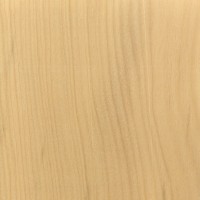 |
Common Name(s): Yellowheart, Pau Amarello Scientific Name: Euxylophora paraensis Distribution: Brazil Tree Size: 100-130 ft (30-40 m) tall, 3-5 ft (1-1.5 m) trunk diameter Average Dried Weight: 52 lbs/ft3 (825 kg/m3) Specific Gravity (Basic, 12% MC): .67, .83 Janka Hardness: 1,790 lbf (7,950 N) Modulus of Rupture: 16,810 lbf/in2 (115.9 MPa) Elastic Modulus: 2,413,000 lbf/in2 (16.64 GPa) Crushing Strength: 10,080 lbf/in2 (69.5 MPa) Shrinkage: Radial: 5.6%, Tangential: 6.7%, Volumetric: 12.0%, T/R Ratio: 1.2 |
Color/Appearance: Heartwood color ranges from pale to golden yellow, darkening only slightly with age. Sapwood is a pale yellow/white.
Grain/Texture: Grain is usually straight, though some figured pieces may have wavy or interlocked grain. Fine uniform texture and a naturally high luster.
Endgrain: Diffuse-porous; large pores in no specific arrangement, few; solitary and radial multiples of 2-3; heartwood deposits occasionally present; growth rings indistinct; narrow to medium rays visible without lens, normal spacing; parenchyma not visible with lens.
Rot Resistance: Rated as moderately durable in decay resistance, with mixed reports on its resistance to insect attacks.
Workability: Yellowheart is normally easy to work with hand or machine tools, though it can be more difficult if interlocked or figured grain is present. Yellowheart also has a moderate blunting effect on cutters. Glues and finishes well.
Odor: Yellowheart has a mild, unpleasant smell when being worked.
Allergies/Toxicity: Yellowheart has been reported to cause skin irritation in some people. See the articles Wood Allergies and Toxicity and Wood Dust Safety for more information.
Pricing/Availability: A commercially important and widely harvested timber in Brazil. Good availability as lumber in a variety of widths. Should be fairly inexpensive for an imported hardwood.
Sustainability: This wood species is not listed in the CITES Appendices or on the IUCN Red List of Threatened Species.
Common Uses: Flooring, furniture, boatbuilding, accents, and turned objects.
Comments: Commonly referred to as Pau Amarello— which is Portuguese for “yellow wood”—few woods are as consistent and vibrant a yellow as Yellowheart. The wood is also sometimes sold as Brazilian Satinwood, though it is not to be considered a true satinwood.
Yellowheart has an unusually high amount of radial shrinkage when compared to its tangential shrinkage, giving it a remarkably low T/R ratio.
None available.
Scans/Pictures: A special thanks to Steve Earis for providing the turned photo of this wood species.
 |
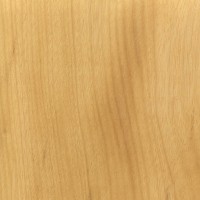 |
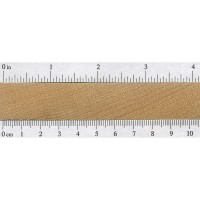 |
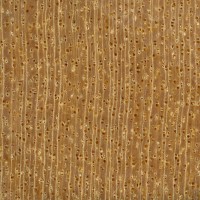 |
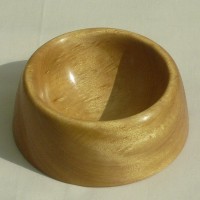 |



A box in yellowheart
Good for bows too
I have attached photos of Pau Amarello, raw and oiled. Lemon color. I’m curious that most people describe the smell as unpleasant, while for me it’s a distinct smell of green pepper with a hint of lime… On the other hand, European boxwood leaves (Buxus sempervirens) have a strong smell of cat urine. Quite often Yellowheart is colloquially referred to as “boxwood” although the properties vary greatly.
In the pictures: during turning; dry, and after oiling
i’m wondering, i have seen a few guys take yellowheart for cutting board, you say that it has porous pores… So, is it good or not for cutting boards ????
I’ve not witnessed any openness in the pore structure of Yellowheart. I’ve found it to be quite dense in fact. I would definitely say that it is indeed a superior material for a cutting board.
Here is a ‘Peeping Tom’ Cat carved from Pau Amarello by Perry Lancaster
Beautiful design and great realization!
I am having trouble getting yellow heart laser engraved, the grain of the wood near the laser seems to brown from the heat. Thoughts?
i heard someone sat to use painters tape before
We have been getting this in the shop I work for. It doesn’t turn very well and it has a big problem with cracking. And if my knives aren’t set perfect and it happens to burn the smell is horrible
If yellowheart is not listed in the CITES appendices or on the IUCN Red List of Threatened Species why is it now unavailable in the US?
Where did you hear that it is unavailable in US?
CorMark international told me they can’t get Yellowheart anymore currently…politics no doubt
Was told the same by West Penn Hardwoods at the beginning of 2022. Been looking for it ever since and can’t find it anywhere. And no one seems to have a straight answer on why it’s not available.
Goto eBay they have it there.
The issue is not CITES or the IUCN Red List. The issue is internal Brazilian regulation. More than 50% of logging in Brazil is done illicitly, and Brazil has been trying to stop that. However, Brazil is not a heavily populated country, and having enough federal police to monitor the outlying forest areas is a problem. The way they’ve found to stop it is to restrict the shipping. The ports are a choke-point they can control. Sometimes a container or two might make it out onto a ship, but without the proper clearance paperwork from the timber export office, it… Read more »
Some Yellowheart under natural light and UV light
Not going to lie it looks quite beautiful under UV.
Hi & thanks for a great database. As someone who appreciates a good database and strives for accuracy, here is a comment:
– “Yellow” in Portuguese (spoken in Brazil) is spelled with an “E” and one “L” — “amarelo”.
– However in Spanish (spoken elsewhere in South America) “yellow” is spelled “amarillo”.
– Therefore the common / alternate name currently displayed may not be accurate. It is currently listed as “Pau Amarello” which seems to combine Spanish & Portuguese. Is it intentional?
Yellow heart is becoming increasingly harder to find. I am hearing rumors that it is on the endangered list. Do you know if there is any truth to this?
I find no mention in the Wood database of Yellowwood -Cladrastis lutea or Cladrastis K. The wood is said to be notable because it is bright yellow. Yet I cannot find a single actual photo of this wood online. The Morton Arboretum has extensive information on this domestic tree but mention nothing about lumber.
I do have a sample of yellowwood but have not yet added it to the site yet. Sorry!
Any chance you’ll add this soon? I’ve got a small sample of it from a tree our neighbor had taken down a few years ago.
It depends on your definition of “soon” I guess. I am working through adding new species alphabetically, and the scientific name begins with C (from Cladrastis genus). So it would be added sooner rather than later, but it still could be many months off. In the meantime, I can say that James Flynn’s book “A Guide to Useful Woods of the World” has a profile specifically dedicated to this wood if you wanted to hunt that down.
Thank you!
Let’s be honest, it smells like cat pee when you cut it. And use a sharp blade, because if you burn it when you’re cutting, it’ll stink up your shop something terrible. But when it is finished it is one of the most fantastic colours you have ever seen.
Not sure about burning rubber smell, but I don’t like how it smells. It’s one of the few wood scents that I really can’t bring myself to appreciate at all; I just think it stinks.
Yellowheart smells awfully strange, like a cross between burnt rubber and burning plastic is this yellowheart? Need answers.
~Trevor
Could you show lancewood and yellowheart side by side? I am trying to prove that a large portion of antique fishing rods claimed to have been made with lancewood were actually made with yellow heart. Odd request I know, but I am trying to pin down Cuban lancewood with 100% accuracy. Thanks and great site and your book will be coming to my library after the first of the year I will order it.